The Alliance aren’t the good guys (or the bad guys) of World of Warcraft
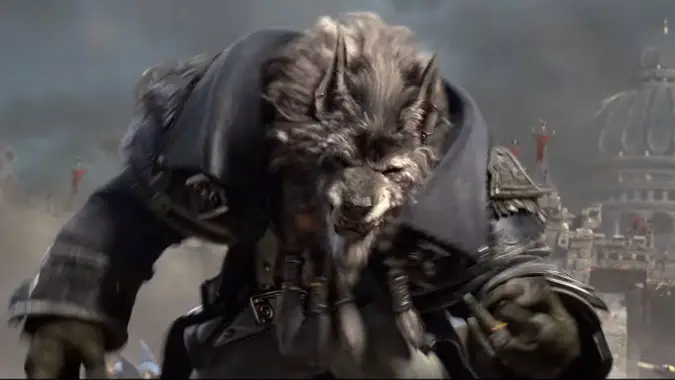
Update: This was originally published just for our supporters on Patreon, but now it’s available for everyone. Enjoy!
I play Alliance more or less exclusively now, and I have since Battle for Azeroth hit. I’m a pretty big Alliance fanboy — I love the Night Elves, Worgen, and Draenei and have spent a lot of time playing through the Alliance storylines. There’s a lot to admire and enjoy about the Alliance, going back all the way to the original Warcraft RTS games, and I’m not telling you that you shouldn’t enjoy the faction and its storylines.
I am, however, telling you that viewing the faction conflict through the simple lens of Alliance good, Horde bad does the story a disservice. For every character like Anduin Wrynn with a heart full of hope and a head full of good intentions, there’s a Sky Admiral Rogers out there, someone who while flying the Alliance banner has done or is doing something really awful. Remember that Aedelas Blackmoore guy? The guy who is singlehandedly responsible for there being a Horde nowadays? He was Alliance.
In many ways, the Alliance side of the game has more moral ambiguity. The Horde story is all about honor vs. expediency, with characters often choosing victory over honor, especially those that have a reason to have soured on the idea of an honorable defeat. But it has to be remembered that Arthas Menethil, the guy who is directly responsible for the Scourge, the fall of Lordaeron, and the destruction of much of Silvermoon was Alliance. I mean, back then it was even called the Alliance of Lordaeron, and if not for a whole lot of people ignoring what was going on in the north Lordaeron would still be here.
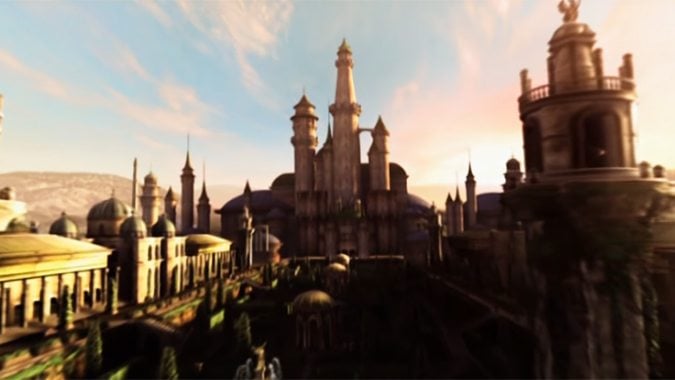
Corruption from within
The fact is, the Alliance only even exists because the Horde invaded Azeroth. The seven kingdoms of Humanity were content to exist in a kind of chilly neutrality towards one another, the Dwarves of Khaz Modan and the Gnomes of Gnomeregan kept to their own affairs, as did the High Elves of Silvermoon. The Night Elves were such isolationists that they lived on a different continent and made no effort to interact with almost any of their neighbors, aside from a few mild interactions with the local Furbolg tribes. The Centaur were annihilating the Tauren through a hit and run war of attrition and starvation and the Night Elves seemingly didn’t even notice.
Even when the Horde arrived, invading the lands of Stormwind and eventually destroying the city, the response from their neighbors was a resounding nothing at all. It wasn’t until Anduin Lothar led the refugees of Stormwind north and essentially used a combination of browbeating and flat out demanding in the case of the High Elves that the Alliance was even formed, and that only worked because the Horde was on the move north. If they could have ignored the danger, they absolutely would have, and one Human kingdom (Alterac) actually made a deal with the Horde to allow their troops through their mountain passes to attack Lordaeron directly.
The Alliance response to this was to destroy Alterac, dispossess the Perenolde family that ruled there, and allow decades of anarchy and crime to dominate the lives of those citizens that tried to remain in their home country, until today the nation is effectively destroyed. The people of Alterac were blameless for what the Perenolde family had done, but they suffered for it regardless. And this combination of malice, short sightedness, and inability to work for a common purpose is common throughout the Alliance’s history.
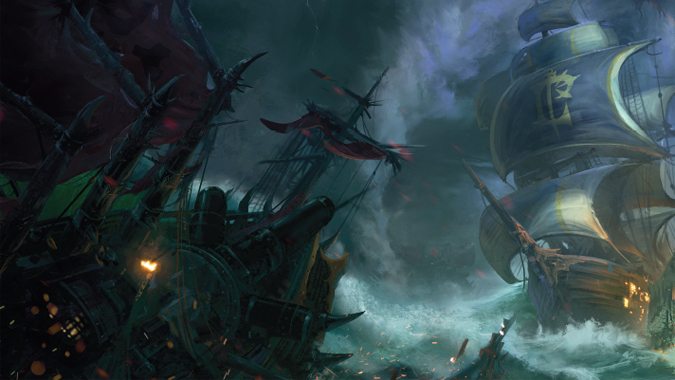
The price of victory
When the Second War was finally won, the Alliance fractured almost immediately. Some, like the High Elves, were only there because they owed an ancient debt to the Arathi bloodline and Anduin Lothar was the last descendant of that bloodline — they’d never cared about the Alliance and were unambiguous in their desire to remain aloof from it. But others, like Stromgarde and Gilneas, left the Alliance for very different reasons. Victory against the Horde had left the Alliance with an unexpected problem — the Horde wasn’t just an invasion force, it was a colonization force, and now all those Orc families that had been intended to settle Azeroth were trapped there. What was the Alliance to do?
What’s fascinating here is that there wasn’t any good option here. You couldn’t release the Orcs — the vast majority of them had nowhere to go, no lands to settle, and many lacked the capacity to do so even if you found some place to put them — the loss of the war seemed to have completely shattered and demoralized them, and some suspected there to be a magical ailment at work as well, related to the demonic blood they’d ingested back on Draenor. You could argue that the solution they did come up with — placing the Orcs in internment camps — was the least awful one, since the alternative being put forth by Gilneas and Stromgarde was simply to put all the Orcs — every man, woman and child among them — to the sword.
That’s correct. That was an actual option, and Genn Greymane and others argued for it. Why should we pay to feed and house the Orcs? The cost of maintaining the camps and Nethergarde Keep eventually led to a fracture between Genn and Terenas Menethil that ended relations between the two countries, and indeed between Gilneas and the entire rest of the world, for decades. All because Terenas wouldn’t just kill Orc noncombatants. And it isn’t as if the internment camps were particularly well-run: as mentioned before, Aedelas Blackmoore was the man in charge of the system, and he was secretly plotting to use a slave gladiator he was raising as a means to weaponize the Orcs and recreate a Horde under his command, in order to destroy the Alliance and rule the pieces as an overlord.
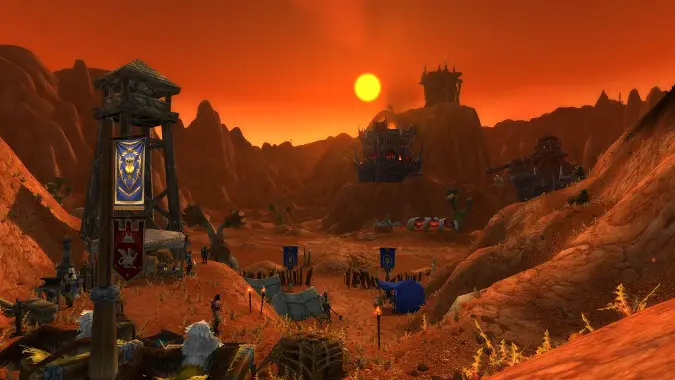
Disloyalty and disfunction
The dirty secret of the Alliance has always been that it is, at best, a collection of people that does not have a common identity. Both factions have good and evil within them. Both factions have their heroes and their villains and their identities can change with the passage of time. But where the Horde often holds together in an “it’s us against the world” fashion, the Alliance is very quick to turn on one another — and has been doing it for decades now. The entire reason the Third War was so devastating was because, when presented with a clear and present danger, the Alliance didn’t come together. Dalaran sent one mage to investigate the plague in Lordaeron and didn’t heed her when she warned them what was happening. Gilneas sat behind its walls. Stromgarde too. Stormwind was so busy dealing with the fallout of their decision not to pay their stonemasons they barely even noticed as one of the largest and most powerful nations of Humankind ever to exist stopped existing overnight.
We see this occur again and again. True, it was the dragon Onyxia who manipulated the Alliance so that most of the territory of Stormwind was mismanaged and abandoned, but it wouldn’t have worked if people weren’t so willing to be manipulated. The Defias wouldn’t even exist if Stormwind had just paid the bills to its own masons instead of provoking them. It’s fair to say that over a decade of misery in Westfall, Darkshire, and Redridge could have been avoided. I’ve barely even addressed Garithos and how he pushed the Blood Elves into open revolt with his naked racism — to the point where Lady Vashj and the Naga seemed like a better ally to Kael’thas than the Alliance.
More recently, Genn and Sky Admiral Rogers defied orders and initiated a direct, unprovoked attack on the Horde in Stormheim at a time when the Burning Legion was threatening to destroy the entire world, turning the situation into a hopeless muddle that we only barely manage to survive. The whole of the Pandaria campaign ends in the Jade Forest with the destruction of the Jade Serpent statue and the release of Sha corruption because the Alliance deliberately pushed a military confrontation using proxy allies — yes, the Horde did so too, but that doesn’t make the Alliance blameless. Let’s face it, nobody comes out of the Pandaria campaign looking good, including the Alliance.
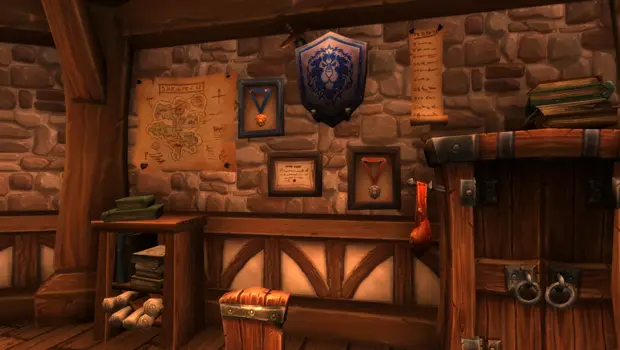
We have met the enemy and he is us
Again, none of this is meant to excuse or exonerate the Horde for its own failings. Nor is this a complete list of Alliance mistakes and misdeeds. W
hether we’re talking about Admiral Proudmoore’s naked aggression in Kalimdor against the Horde after the Battle of Mount Hyjal created a chance for peace, or Garithos, or Sky Admiral Rogers letting her very real grief and rage over the destruction of her family and friends make her as dangerous to the Alliance as to the Horde, the fact is that we don’t need to try and create moral ambiguity in the Alliance because it’s already there. The Alliance is an often fractious lot, with as many sinners and saints among their number, and they do things like force a Goblin airship pilot into actual slavery with a lot less hand wringing than you might expect. (Seriously, they did this n Howling Fjord. The guy didn’t get away until War Crimes, and even then he wasn’t freed by the Alliance, but by loyalists of Garrosh Hellscream.)
I’m arguing less for the Alliance as the bad guys and more that there aren’t any real good or bad guys in this story — like all war stories, one side might be more culpable and more the aggressor, but that doesn’t mean anyone’s hands will be clean by the time it’s over.
Please consider supporting our Patreon!
Join the Discussion
Blizzard Watch is a safe space for all readers. By leaving comments on this site you agree to follow our commenting and community guidelines.
 @MatthewWRossi
@MatthewWRossi



